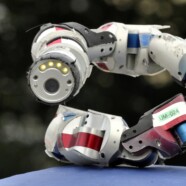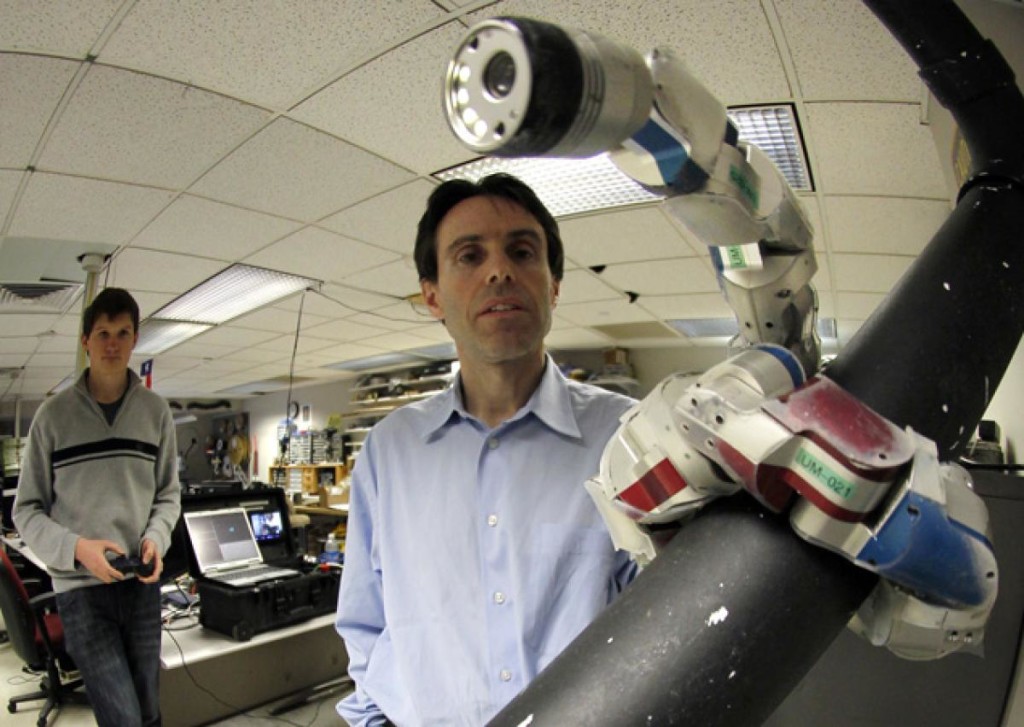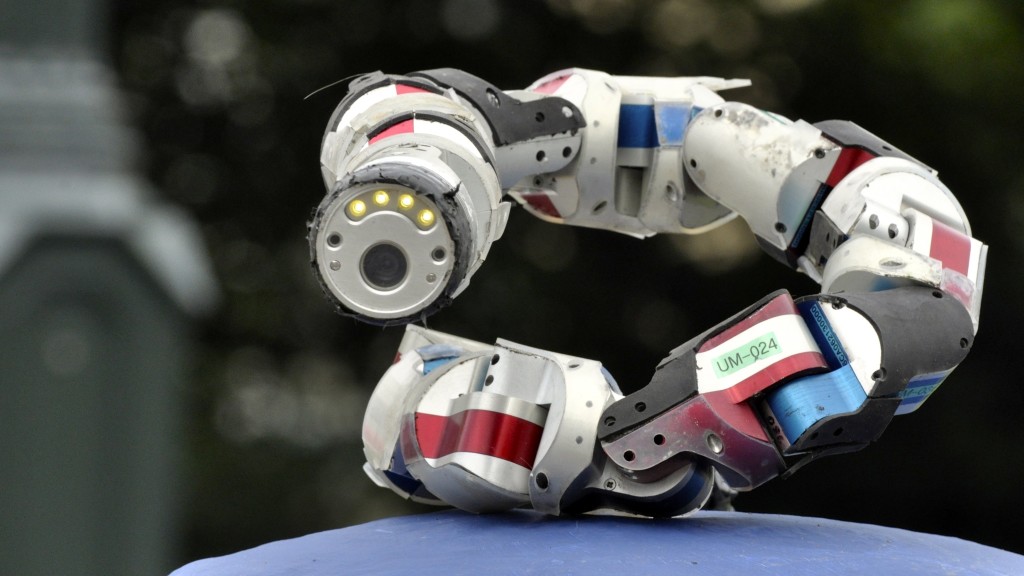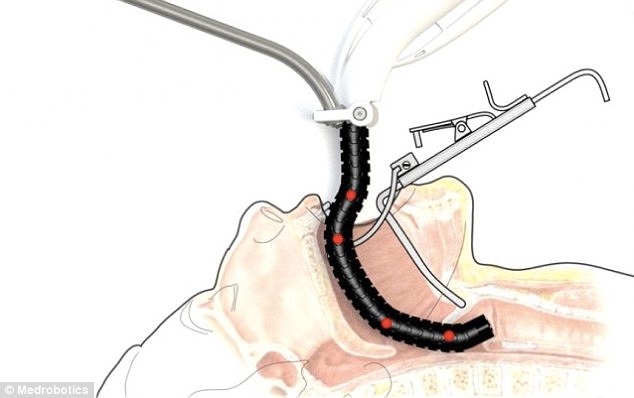Robotic Snake
Medrobotics Corp. has announced it will begin limited marketing in Europe of a robot-assisted surgical device that is based on the snake robot research of Howie Choset, Carnegie Mellon University professor of robotics.
The Flex System is a flexible endoscopic system that enables surgeons to access and visualize hard-to-reach anatomical locations. The system thus promises to extend the benefits of minimally invasive surgery – shorter hospital stays and recovery times – to a broader population of patients. The company initially has targeted the system for use in head and neck surgery, operating through the mouth.
Choset developed the surgical snake robot in collaboration with Alon Wolf, then a post-doctoral researcher and now a faculty member at Technion-Israel Institute of Technology, and Dr. Marco Zenati, then a professor of surgery at the University of Pittsburgh School of Medicine, now at Harvard Medical School. Choset, Wolf and Zenati co-founded Medrobotics as a Carnegie Mellon spin-off in 2005.
Today, the company is based in Raynham, Mass and has obtained the CE Marking that enables it to initiate a limited commercial launch of the Flex System in select European markets.
Choset, the company’s acting chief technology officer and a partial owner, said he is gratified that the fruits of his research may soon begin helping patients. But he emphasized that the device never would have reached market without one crucial action on his part: letting go of his technology.
“Commercializing a surgical device is not something that a robotics professor such as myself can accomplish with grants to the university,” Choset said. “It requires a large, long-term investment that only a private company can bring together, as well as specialized medical device expertise. When it comes to making this technology available to patients, the company really did the heavy lifting.”
Choset said Pittsburgh was the ideal starting point for this technology because of the world-class expertise in the Robotics Institute and at Pitt. Likewise, it benefited from the entrepreneurial and marketing support of the Pittsburgh Life Sciences Greenhouse (PLSG), which initially invested in Medrobotics. Choset said he is grateful for their support and vision, most notably from the PLSG’s James Jordan, in carrying this technology from the lab to the market.
Choset is a leading expert on multi-jointed robots that resemble snakes. His research team has developed a series of robots capable of making their way through the rubble of collapsed buildings, climbing poles and crawling through pipes.
For the surgical device, Choset and his research team designed a probe that could bend, but remain rigid. It thus combines the features of a laparoscope – a rigid, straight viewing device often used in minimally invasive surgery – with an endoscope, which is a flexible, non-rigid device for peering inside the body.
Physicians can use a joystick to steer the Flex System around organs or other obstructions. It employs a “follow-the-leader” technique so that as the device is extended into the body, the mechanical linkages that follow behind automatically conform to anatomical curves.
The head of the device features a high-definition video camera. Ports on either side of the camera can accommodate tools for cutting or grasping tissue. Though initially developed and tested for heart procedures, Medrobotics has focused its marketing on head-and-neck surgeries accessed through the mouth.
“The Flex System provides a unique platform to access and visualize surgical targets in difficult to reach locations, such as the oropharynx (the area connecting the mouth to the top of the throat) and endolarnyx (within the larynx),” said Dr. Marshall Strome, chairman emeritus of the Cleveland Clinic Head and Neck Institute and a Medrobotics medical adviser.
Source: Carnegie Melon University / VOA News (video)




